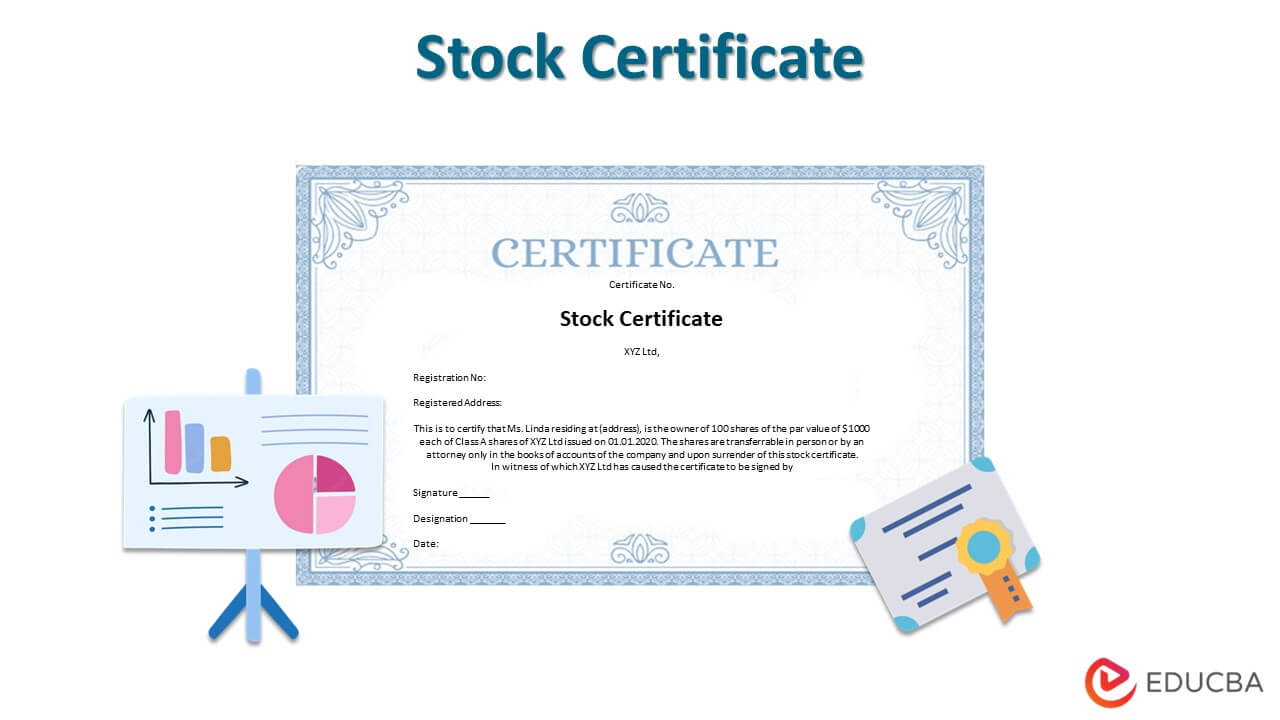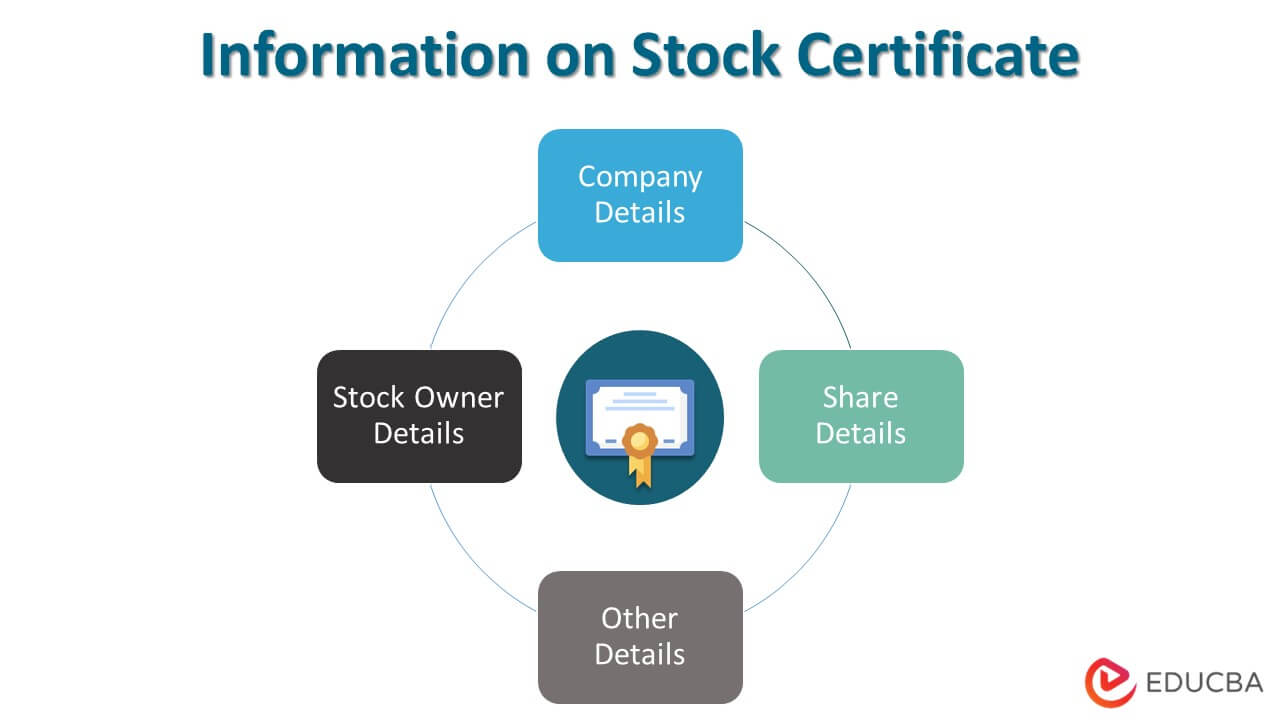Updated July 19, 2023

Definition of Stock Certificate
The company issuing stocks issues a stock certificate to the stockholders, which represents the stockholder’s ownership in the company, indicating the number of shares owned by the stockholder. It is proof of an investor’s holding in the company’s shares.
Explanation
It indicates the number of shares a person owns and other details relevant to the issued shares. It contains details such as certificate number, company name & registration number, shareholder’s name & address, number of shares issued, par value per share, the amount paid on shares, class of shares, and the date of issue.
Nowadays, many companies do not issue physical certificates; digital certificates or documents are issued.
Example of Stock Certificate
| Certificate No.
Stock Certificate XYZ Ltd, Registration No: Registered Address: This is to certify that Ms. Linda residing at (address), owns 100 shares of the par value of $1000 each of Class A shares of XYZ Ltd issued on 01.01.2020. The shares are transferrable in person or by an attorney only in the books of accounts of the company and upon surrender of this stock certificate. In witness of which XYZ Ltd has caused the certificate to be signed by Signature Designation Date: |
Information on Stock Certificate
As you must have been in the above sample itself, a stock certificate contains the following details:
- Company Details: The company issuing such stock certificates mentions the details of the company, including its name, registration number, and registered address.
- Stock Owner Details: The person to whom the certificate is issued, i.e., the owner of the shares, provides their name and address.
- Share Details: The certificate includes the details of the shares granted to the certificate holder, encompassing the number of shares issued, the par value per share, the class of shares issued, and the total amount.
- Other Details: The certificate discloses other details, such as the certificate number, general conditions, and details of the person authorizing the certificate on behalf of the corporation.
How to Issue Stock Certificates?
They can be issued as physical certificates or as electronic records. Stock certificates can be given as physical documents for private companies per the above mentioned sample. An authorized signatory authorizes the certificates with a signature and affixes the company’s common seal on physical certificates.
Advantages
- It is proof of the investor’s ownership of the mentioned number of shares in the company.
- These details help the investor justify the share cost details at the time of the tax return.
- It establishes an investor’s claim over the shares’ ownership in case any future dispute arises.
Disadvantages
- The physical stock certificates are to be maintained carefully since the investor would have to spend extra money to get the certificate issued if they are lost.
- Printing physical certificates waste the paper and resources of the company.
- It is difficult to maintain such certificates for the investor, and every time they want to refer to the details of their holdings, they need to refer to the stock certificate, which becomes cumbersome.
Conclusion
The purpose of issuing stock certificates is to establish an investor’s ownership in the said number of the company’s shares. The investors use it as an acknowledgment or a receipt of their stock holdings in the company.
Recommended Articles
This is a guide to Stock Certificate. Here we also discuss the definition and how to issue stock certificates, Along with the advantages and disadvantages. You may also have a look at the following articles to learn more –


